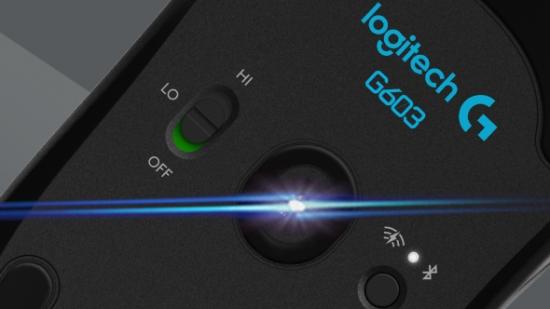Bye bye, Pixart. Logitech have ditched the sensor company to create their own ultra-efficient HERO sensor, so they never have to share the fruits of their technological labours ever again. It’s accurate, efficient, affordable, and lasts and lasts and lasts.
Check out our pick of the best gaming mice around today.
Logitech don’t sit still. We’ve only just had the incrediblePowerPlay charging system-meaning you never have to charge your wireless mouse again – and now they’ve created a peripheral sensor that lasts a year and a half on a single charge and won’t break the bank.
But they’re not looking to replace PowerPlay with the new HERO (high efficiency rated optical) sensor, but open wireless peripherals up to a broader market. “We want to make cordless affordable,” Francois Morier, Logitech’s principal sensor guru, explains to me.
“We’ve got PowerPlay,” Chris Pate says, the deadpan straight man to the excitable, effusive sensor engineer, “which is an amazing experience. The downside is that it’s not particularly accessible. If you’ve got concerns about wireless, you’re not terribly sure about it, you’ve got an expensive charging system and an expensive mouse. It’s hard to convince somebody who’s not sure about wireless that you should drop that much money on a wireless mouse.”
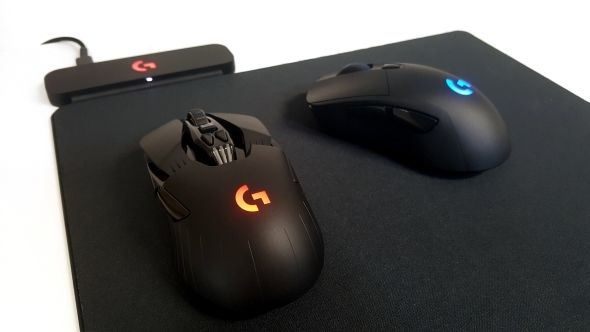
And that’s where the new HERO sensor, and the G603 mouse specifically, comes in. It’s about getting high-performance, high-efficiency wireless control in a package that costs the same as a mid-price wired rodent. And to do that they’ve ditched their long-time sensor partner, Pixart, to go it alone.
“The advantage is this is full exclusive.” Morier says. “We built it for us. Each time Logitech makes a move, other [manufacturers] finally get this advantage as well. And now there is a nebula of sensor, our own 3366, but everybody claims ‘it is my one.’ It’s a joke. First they ask for higher DPI and then they ask for a fancy name.”
Logitech have been innovating in mice sensors, in partnership with Pixart, for many years, creating new gaming sensors with ever higher performance and accuracy. The problem, for them, is that they only ever have timed exclusivity on the technologies they helped create, with other manufacturers swooping in, taking ostensibly the same sensor and releasing mice with the same fundamental performance.
“Ultimately,” Pate says, “we’ve been enabling the gaming industry for years.”
But it’s been a hell of a journey from the joint design of the PMW 3366 sensor, which is currently the top gaming mouse sensor on the market.
“The idea of this particular design is at least three years old,” Morier says. “The time it took to design it properly is more two years. When we designed 3366 we were satisfied, we were on the top of the performance. We were almost happy that we could go on holiday, but still there was something to do, but we didn’t know what.”
The what, it turns out, is to make a gaming grade optical sensor that’s ten times as efficient as the best sensor on the market. That’s a huge leap in efficiency, especially as the HERO sensor still retains the same level of gaming performance as the brilliant G903. The first HERO mouse, the G603, has still got a maximum 12,000DPI, is capable of tracking at 400ips, has a 1ms response, and has zero smoothing.
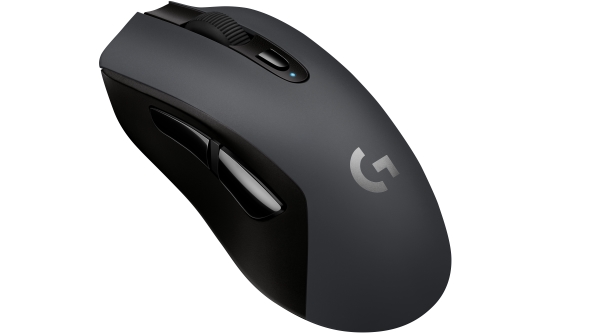
Logitech chose their new silicon partner for their experience with existing sensor tech and specifically their skills with the analogue to digital conversion. As impressive as the tech is now though, it took Logitech a year to convince their nameless partner to go the extra mile and design the necessary fresh tech for the HERO sensor.
“They’re genius in that part,” Morier says. “Their power management knowledge and the way they manage the conversion is unique. This is the reason we selected them, because we know that this is unique and nobody else could have access to this.”
This would, however, be their first product designed for the gamer.
“They didn’t have any gaming sensor background,” Morier explains. “They have very good sensor background, but no gaming. So for them, we set the bar and said ‘if you pass below we don’t want your chip’. So they saw this as a huge threat.”
Putting all their eggs in the Logitech basket was a high-risk strategy. If they’d spent the money trying to chase Morier’s dream sensor, only to fall short of their expectations, then they would be saddled with the R&D costs and no customer to recoup the costs. Luckily, they blazed past Logitech’s original specifications, leaving them with a system they never expected would be able to perform as well both in straight gaming accuracy and wireless efficiency.
Running in the HERO sensor’s high-performance mode, with the super slick Lightspeed wireless connection, the G603 can hit 500 hours of non-stop gaming. Try challenging that and you’ll be decomposing on the tea-stained desk of a 24-hour LAN cafe long before the batteries in the G603 are. In general usage, however, you’re looking at between four and six MONTHS of battery life.
That’s just in performance mode. If you switch the G603 into endurance/office mode then the HERO battery life stretches to a full 18 months. And all of this on a pair of AA batteries.
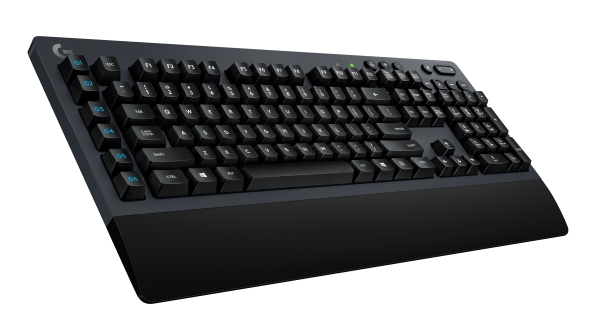
The reason Logitech have chosen to go with removable AA batteries is mainly to make it accessible. If they’d opted for a rechargeable lithium battery then the costs would take a massive jump and you’d be looking at a +$100 price point. The G603, on the other hand, is just $70.
The added bonus of the changeable batteries is that it gives you a built-in weight system. You can go big, with nickel metal hydride AAs, which weigh more than normal alkaline batteries, and get up to 150g. Or you could just go for a single lithium battery and you’ll be just over 100g in total weight. Because you can run the G603 with a single AA it also allows you to adjust which side the weighting is on, should you care about such things…
With the trifurcate branches of the Lightspeed wireless connectivity, the PowerPlay wireless charging, and now the impressive HERO sensor, there’s almost no need to ever trail a cable from your mouse ever again. But Logitech aren’t stopping at mice; they’ve also just released the G613 mechanical keyboard, which uses the same HERO tech to deliver the same 18 months of wireless gaming performance on a pair of AA batteries.
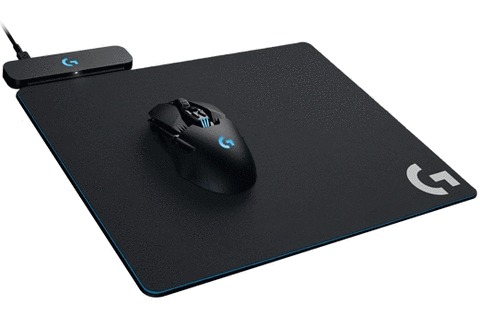
But what of PowerPlay? Surely HERO makes it almost redundant.
“PowerPlay is for a different type of user,” Pate says. “There is still a type of user who is convinced that this will be perfect, and have no battery problems… until they pull the last raid boss and then it will die. With PowerPlay you have no fear whatsoever, ever, that the battery’s going to die.”
So PowerPlay is going to stick around as the high-end wireless tech for Logitech, with the HERO designs filling out the stack lower down. But that’s not necessarily going to be the way things remain.
“There’s nothing about HERO that is incompatible with PowerPlay,” Morier says.
“It’s a great recharging system and allows us to do potentially crazy things,” Pate continues. “Right now we have a 720mAh battery… imagine a 20mAh battery that can power the mouse for 45mins, but you never need to charge it. You can therefore have a superlight mouse.”
So this is just the start. Logitech have now laid the foundations of the next few generations of gaming peripherals, and the other players are going to have to do some serious innovating of their own to catch up, because they can no longer ride the Logitech coat-tails.
